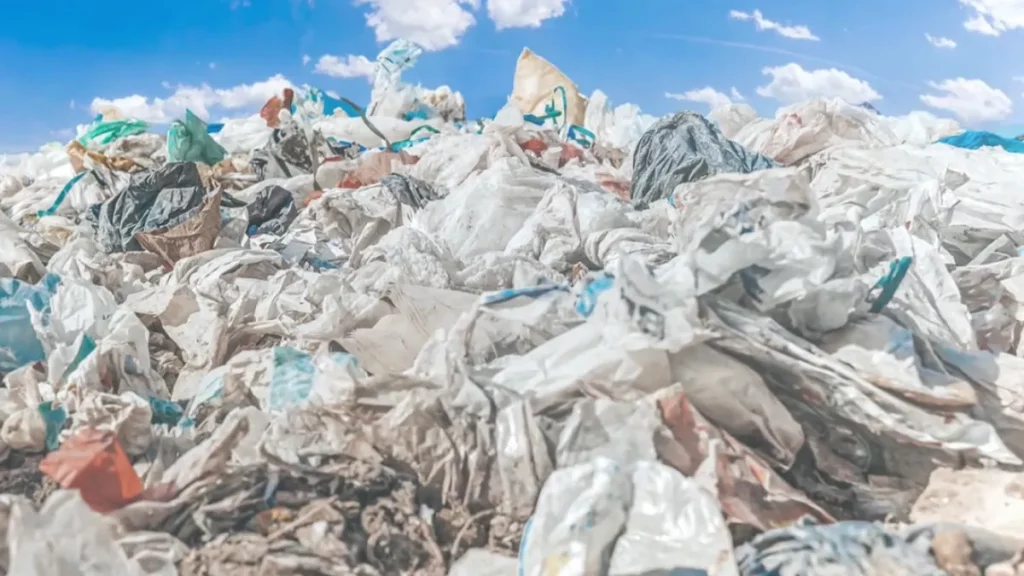A landfill is a place where people, businesses, and industries can put their solid waste. More specifically, a landfill is a man-made, permanent, clean place on land where solid waste from homes and businesses can be buried. It is a place where waste goes after it has been sorted to get rid of things that can be recycled. It is where trash ends up, so it is the most dangerous way to get rid of trash for the environment.
What Happens to Waste in a Landfill?
There isn’t a lot of fresh air or liquids to drink in a landfill. When these things occur, trash decomposition is slow. Landfills aren’t designed to decompose garbage; they’re meant to bury it. Most landfills are capped when they run out of room. Both normal trash and hazardous waste can be sealed in various ways.
For dangerous trash:
To cover the trash, man-made materials are used.Two further feet of compacted clay sit above this.
Chemicals and liquids escape from decomposing garbage through a drainage layer.
Lastly, a topsoil or dirt layer was applied to the system.
For general waste:
A system known as a “solid liner” is located at the very bottom of the landfill.
Clay that has been compacted and synthetic material are spread out across the landfill site in alternating layers.
The clay is covered with the final layer of topsoil.

Landfill Types
Landfills for municipal solid waste
If you dispose of your trash in a trash receptacle, it is likely that it will wind up in a municipal solid waste (MSW) landfill. Typically, one of these places comes to mind when you think of a landfill. Despite being the most common, they may not always be available to the general public. MSW landfills often have some of the tightest safety and monitoring rules because they typically handle the majority of domestic waste kinds, including everything from used tissues to cardboard boxes from a basement cleanout. These regulations frequently include limitations on landfill lining, operational procedures, groundwater monitoring, and closing procedures.
Landfills for industrial waste
It’s true that a landfill’s definition is plain. Industrial waste is dumped in a landfill designated for that type of waste. Although commonly used for the disposal of construction debris, these landfills may accept any form of solid industrial waste and are hence sometimes referred to as C&D landfills.
Landfills for hazardous waste
Hazardous waste landfills are the most strictly controlled and constructed landfills for significant reasons. They are made expressly to contain hazardous wastes in a way that practically guarantees there will be no environmental release.
Landfills for green waste
Despite the fact that the EPA has not given these dumps legal approval, many towns are beginning to provide a location for organic waste to break down organically. Because most conventional landfills and transfer stations are not as welcoming of organic products like fruits, vegetables, and, in particular, yard waste disposal, these composting facilities are growing in popularity. Your local government controls everything in this.
Landfills in Texas
Arlington Landfill
The company participates in community projects that promote environmental preservation, sustainability, and education. These projects include composting and lowering carbon emissions by switching from diesel to compressed natural gas-powered trucks. Animal waste, construction and demolition debris, used carpet, contaminated soil, municipal solid waste, recyclables, sludge, tyres (truck and auto), and yard waste are all accepted.
C.M. Hinton Jr. Regional Landfill
The C. M. Hinton, Jr. Regional Landfill in Garland was inaugurated in April 2002 and has a projected lifespan of about 50 years. Approximately 1,100 tonnes of rubbish are taken in daily by the Hinton Landfill from residents, private waste haulers, and commercial businesses. This garbage includes municipal solid waste, construction, and demolition waste.
Benefits of Landfills
Waste disposal sites are important sources of energy
Trash builds up and begins to decompose, producing carbon dioxide and methane. It is possible to remove, purify, and utilise these gases to produce energy. Garbage dumps are where methane in the United States comes from third. The nation’s landfills also produce about 95.6 million of these Carbon (IV) oxides annually.
Eco-friendly Landfills are Modern
Landfills used to be open-air locations where you could dump nearly anything away, but that is no longer the case. Landfill facilities today adhere to stringent laws, regulations, and standards as a result of the efforts of environmental specialists and environmentalists. The landfills’ layout effectively utilises technology. Nothing leaks out and causes damage if the soil is properly lined and the leachate is managed.
Make towns, cities, and neighbourhoods cleaner
People will simply dump their rubbish in the open spaces if there is no landfill in a city or if they are aware that there isn’t a good manner to do so. This is bad for both people and the world around them. When landfills are kept in good condition, local waste won’t be exported to other countries.
Problems with landfills
Landfills share some of the responsibility for climate change.
One tonne of biodegradable waste can produce 400–500 cubic meters of landfill gas. The two primary gases in landfill gas are methane and carbon dioxide. Other gases are present in trace concentrations as well. Methane has a 25-fold greater global warming potential than carbon dioxide. Therefore, the consequences of climate change and global warming are getting harsher.
It is simple to ignite methane.
Gases like methane burn readily. It may readily start fire in a short area with little airflow, and the entire landfill could catch fire in a matter of seconds. The range of methane concentrations that can cause an air explosion is between 5 and 15% of the total volume of air. Aside from the harm they cause to the water layer beneath the earth, dioxin generated by the flames is also bad for the ecosystem.
